“Ndunda Wa Maji,” meaning “The Spirit of Flowing Wisdom” in Swahili, is a profoundly elegant and symbolically rich ceremonial mask rooted in the visual traditions of the Komo, Dogon, or Bamana peoples of West Africa. The mask embodies elemental spirituality, specifically the concept of movement as message—a notion that reflects the interconnectedness of spirit, nature, and human intention.
Crafted primarily from wood and organic materials such as vine and bark, Ndunda Wa Maji features a narrow, elongated face framed by looping arcs of raw wood, bound with fiber cordage. These curving forms are not simply aesthetic—they serve as symbolic waves or energetic fields, representing the movement of water, air, or sound around a spiritual vessel. The central mask, with its cool blue and weathered white pigmentations, evokes the serene energy of rivers, ancestral clarity, and dream states.
The mask’s facial design is minimalist and stylized, with a bird-like elegance. Deep almond-shaped eye slits cut through the mask’s center, imparting a sense of supernatural awareness and piercing vision. The vertical blue stripe running down the center of the forehead and nose not only visually elongates the form but also signifies the lineage channel—the spiritual path through which knowledge and ancestral energy flow. In many African cosmologies, this stripe represents wisdom traveling from the heavens into the vessel of the human body.
Flanking the face are four cylindrical protrusions—possibly stylized ears, horns, or symbolic handholds for guiding spirit. Their symmetrical positioning and neutral tone echo a sense of harmony and elemental control. Below them hang two long, leaf-like pendants carved from the same weathered wood and painted in faded indigo and earth tones. These pendants sway when the mask is moved, enhancing its kinetic effect during ritual performance.
The entire form is encased in an arched skeletal frame made from intertwined, untreated tree limbs. This frame is bound with coarse fiber twine, emphasizing its organic origin and natural symbolism. These rings serve both protective and performative purposes. Spiritually, the concentric arcs are read as energy shields or barriers between realms—separating the sacred performer from the physical world. Visually, they amplify the mask’s presence, making it larger-than-life during dance or invocation ceremonies.
Ndunda Wa Maji would traditionally be worn or presented in contexts requiring spiritual balance—such as healing ceremonies, agricultural blessings, or water rites. Masks of this style were often part of secret societies and initiated by priestly figures who mediated between the ancestors and the living. The design’s aquatic undertones suggest that this piece was likely associated with the regulation of natural forces like rain, river flow, or emotional clarity within the community.
The craftsmanship is both refined and raw—a deliberate duality. The chiseled surface of the wood is lightly patinated, with traces of faded blue, gray, and ivory mineral-based pigments. This coloring reflects not just aesthetic taste but sacred codes. Blue signifies water, peace, and the unknown; white speaks to ancestral purity and spiritual transition; brown and black ground the mask in the material world. The surface weathering indicates use and time—evidence of its life beyond the studio.
In a contemporary setting, Ndunda Wa Maji becomes a symbolic artwork of calm and continuity. Its flowing, circular structure contrasts sharply with angular modern architecture, making it ideal for softening space while deepening its philosophical resonance. Whether mounted in a meditation room, cultural gallery, or private collector’s foyer, it whispers a story of rootedness, rhythm, and ancestral flow.
The name—The Spirit of Flowing Wisdom—encapsulates the deeper meaning of the mask. It is not merely an object of beauty, but a tool of channeling, a symbol of listening, and a visual ode to the sacred practice of remembering. For collectors, curators, and spiritual aesthetes, this mask represents not only a physical piece but also a living map of movement, balance, and harmony across worlds.

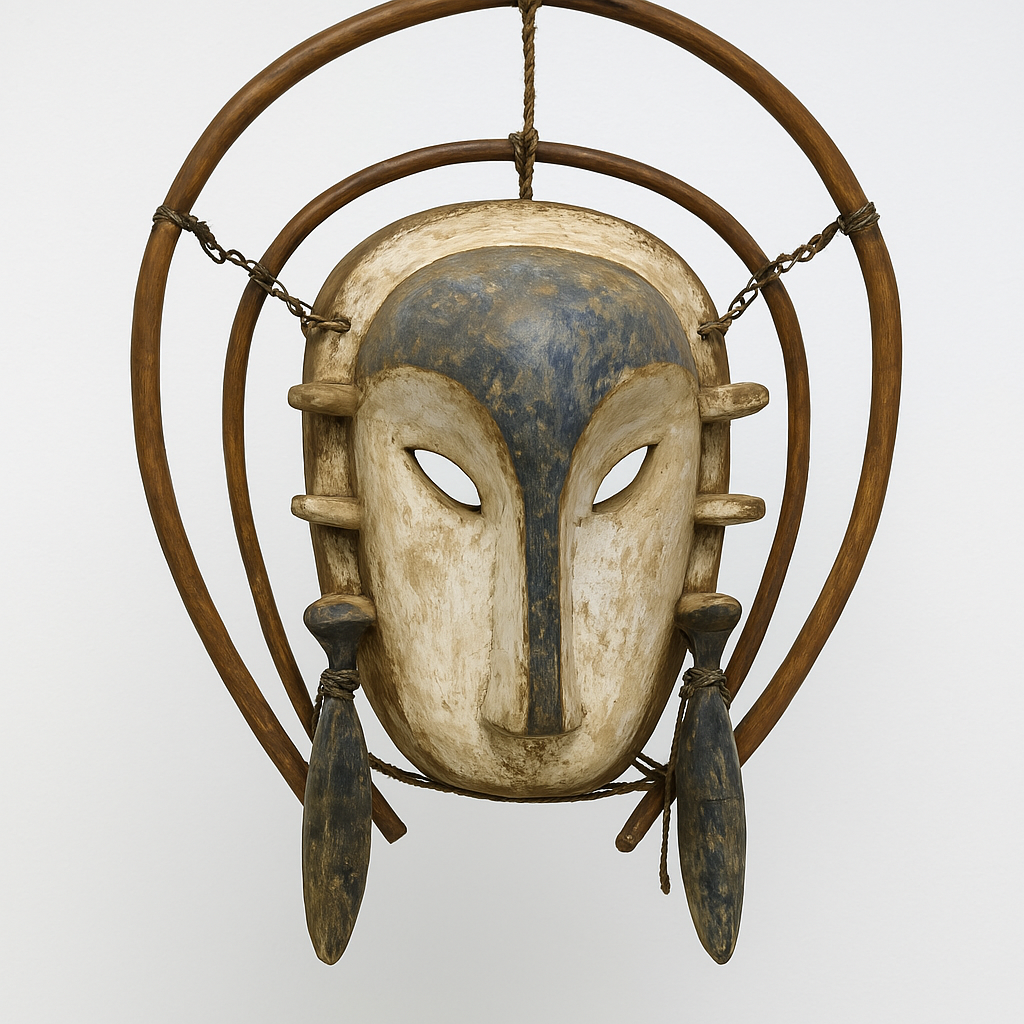
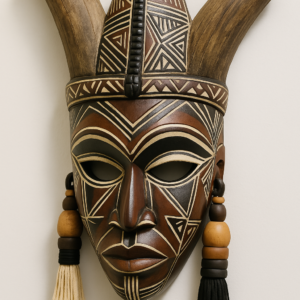
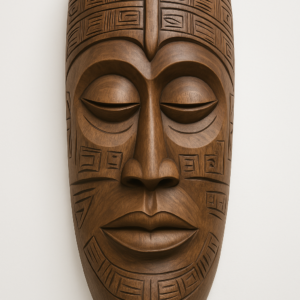


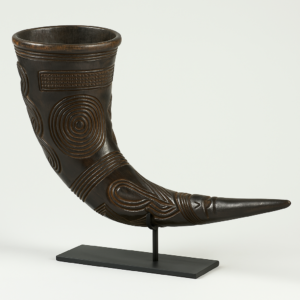
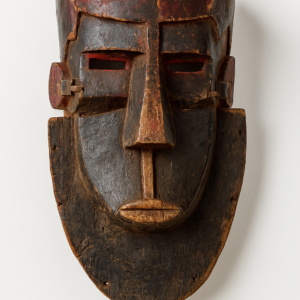
Reviews
There are no reviews yet.